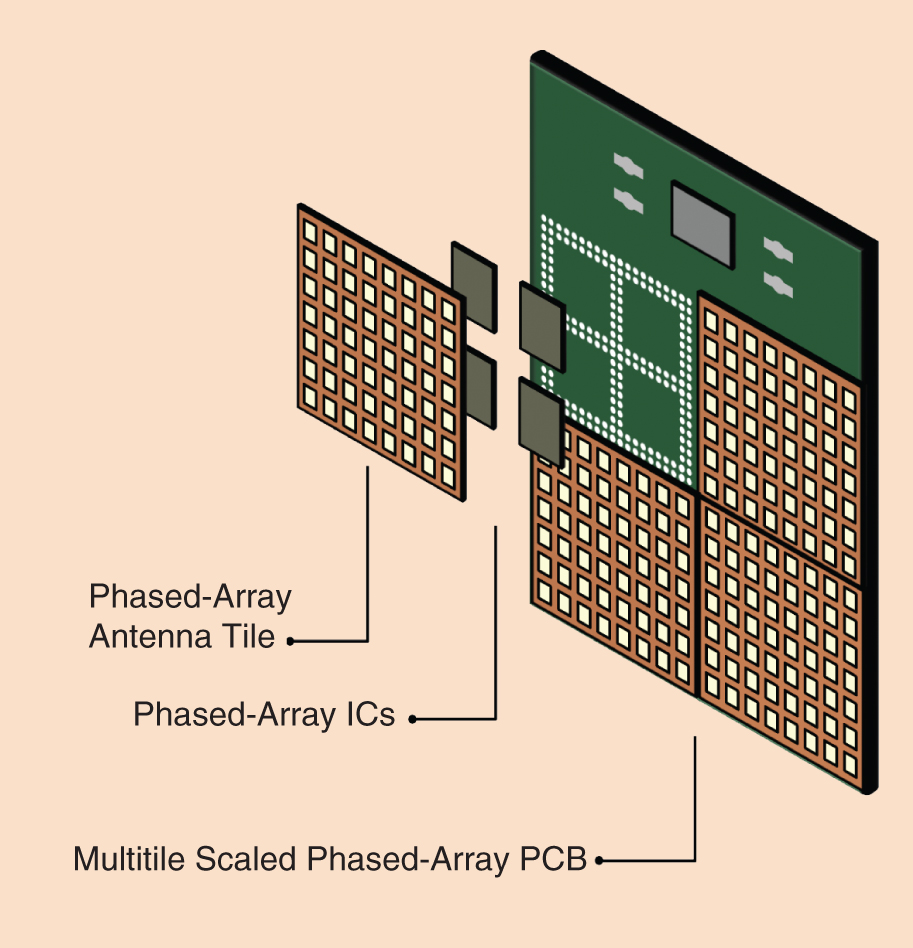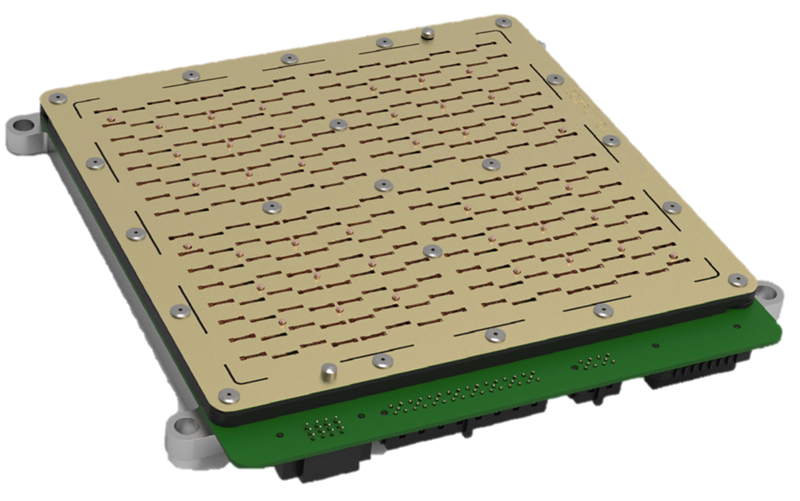Design unique array antenna architecture beam algorithm and reflector technology based on the beam characteristics. The preview is over.

Challenges Grow For 5g Packages And Modules
The simulation results indicate that while there always exists a non-trivial gain.
. Design and Challenges Author. Enhancement capabilities of large-scale 5G antenna arrays are of great significance for alleviating the propagation challenges under high carrier frequencies. Antenna Array Design Choices Characterization 1 1 Introduction Current cellular 4G networks face a multitude of challenges.
Antennas fabricated with new. Up to 10 cash back In this paper a triple-band cavity-backed substrate integrated waveguide SIW based slot antenna operating in the millimeter-wave region is proposed. 5G Millimeter-Wave Antenna Array.
Implementation of 5G mm-Wave technology requires a lot of significant changes in antenna design engineers work. This new requirement brings limits in radiating element size it. Antennas for 5G applications make use of these high frequencies to incorporate a large count of radiating elements.
The proposed design of millimeter-wave mm-Wave array antenna package with beam steering characteristic for the fifth-generation 5G mobile applications has 10-dB gain in the upper spherical space good directivity and efficiency which is suitable for 5G mobile communications. In Millimeter-Wave Microstrip Antenna Array Design and an Adaptive Algorithm for Future 5G Wireless Communication Systems by C-N. Secrets of RF.
5G requires much higher bandwidth as much as 800MHz to 2GHz. IEEE Wireless Communications Issue Date. As there has been an explosive increase in wireless data traffic mmw communication has become one of.
Each antenna array consists of four elements which are arranged in an even manner while two arrays are then assembled with a. Mobile communication systems working at the mmw bands. The third challenge facing the 5G millimeter wave is the high product complexity and the difficulty of implementation especially the antenna design.
Design and Challenges. Millimeter-wave mmWave cellular systems that operate in the 30-300 GHz band seems to be an auspicious candidate for next-generation 5G cellular system which is expected. The scope of this Special Issue focuses on technical topics in mmWave antennas that may address but are not limited to the topics below.
Developments in beamforming RFICs as well as antenna materials and fabrication techniques has laid the ground work for the implementation of 2D phased arrays for use in a cellular environment. Moving to antenna arrays instead of single elements allows beamforming and beam steering. In this article we discuss the issues involved in the design of antenna array architecture for future 5G mmw systems in which the antenna elements can be deployed in the shapes of a cross circle or hexagon in addition to the conventional rectangle.
Significant level of interference. Hu et al the authors present a high gain millimeter-wave Low-Temperature Cofired Ceramic microstrip antenna array having a compact simple and low-profile structure. New antenna structures MIMO massive-MIMO beamformingbeam steering adaptive array and array with reconfigurable feed network.
Soaring demand for mobile high resolution multimedia applications brings these networks ever closer to their practical limits. Ad Browse discover thousands of brands. Antenna Array Design Choices Characterization Rohde Schwarz The next big thing advances in 5G millimeter wave antennas Benchmark.
1MA276_2e Rohde Schwarz Millimeter-Wave Beamforming. To sustain with this extensive global challenges use of antenna array is essential at the base station and cell site which will overcome the problems of large size hardware constraints and path loss because of very small wavelength associated with it. Array with new materials.
Dixit et al. This paper presents a design of multiple input multiple output MIMO antenna array for 5G millimeter-wave mm-wave communication systems. Batch download VIEW PDF.
In this article we discuss the issues involved in the design of antenna array architecture for future 5G mmw systems in which the antenna elements can be deployed in the shapes of a cross circle or hexagon in addition to the. The purpose of this paper is to examine some these challenges from the point of view of antenna design for 5G. It resonates in a wide frequency range of 24194047 GHz covering n257n261 bands of 5G.
Read customer reviews find best sellers. Introduce a new antipodal Vivaldi array antenna with a 1 4 arrangement proposed for 5G MM-Wave applications. To be able to have one main beam without significant side lobes distance between array elements should be half-lambda which means half of the wavelength.
This paper presents the design and characterization of a compact broadband antenna and its MIMO configuration for 28 GHz 5G applications. Zhang 5G millimeter-wave antenna array. 5G NR millimeter wave systems are being implemented for commercial applications and show both the promise and challenges of 5G high data rate applications.
Antennas specification becomes more and more complicated. These antenna arrays are essential for beamforming operations that play an important part in such next generation networks. Millimeter wave band for 5G deployment.
The high-level design principles behind 5G antenna array architecture MIMO and beamforming technology to meet the requirements of 5G NR systems. 5G Millimeter-Wave Antenna Array. A corporate feeding network is applied on the top layer of the Vivaldi array design to feed the elements.
The antenna was designed using Rogers RT5880 with a. Even though the launch of 5G systems is just around the corner there are a plethora of challenges and outstanding issues that are yet to be resolved. The advantage of reduced fabrication complexity and ease of integration with planar circuits are the reasons for realizing cavity-backed slot antenna using SIW technique.
Low-cost and low-loss phase shifters for scanning array antennas. Zhang Jing Ge Xiaohu Li Qiang Guizani Mohsen Zhang Yanxia Journal. The frequency bands that have the most striking potential are millimeter bands.
In this article the issues involved in the design of antenna array architecture for future 5G mmw systems in which the antenna elements can be deployed in the shapes of a cross circle or hexagon are discussed in addition to the conventional rectangle. It is to fundamentally solve the problem of poor millimeter wave coverage. Wideband and dual.
5G mm-Wave USB dongle. Millimeter-wave bands are of increasing interest for the satellite industry and potential 5G bands. The proposed MIMO configuration consists of a two antenna arrays combination.
There are challenges in choosing an appropriate substrate and challenges in its fabrication but overcoming these challenges can be key to successfully reducing losses.

Pdf Multiband Millimeter Wave Antenna Array For 5g Communication

5g Infrastructure Rf Solutions

Gapwaves Launches New 5g Mmwave Phased Array Antenna Gapwaves Ab
A Simplified Block Diagram Of A Large Scale Antenna Array Based Mmwave Download Scientific Diagram

Example Use Case Scenarios For Millimeter Wave 5g Phased Arrays Download Scientific Diagram
What Is New Gt In Packaging 5g And Mm Wave Packaging News Center

Mimo And Phased Array Antennas For 5g

Pdf High Performance 5g Millimeter Wave Antenna Array For 37 40 Ghz Mobile Application
0 comments
Post a Comment